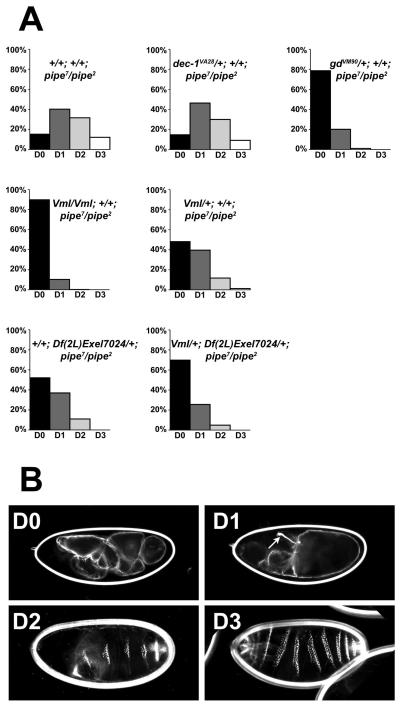Figure 3.
Reduction in the expression of VML and other vitelline membrane components influences the dorsal-ventral phenotypes of embryos produced by pipe7/pipe2 mutant females (A) Percentage of embryos exhibiting dorsal-ventral cuticular phenotypes of varying severity, produced by females of various genotypes. DV phenotypes of embryonic cuticles were classified according to Roth et al. 1991 [33], as follows. Embryos lacking all lateral or ventral pattern elements were scored as completely dorsalized (D0). Embryos bearing Filzkörper or Filzkörper material but lacking ventral denticles were scored as strongly dorsalized (D1). Embryos with Filzkörper/Filzkörper material and ventral denticle bands of narrower than normal width were scored as moderately dorsalized (D2). Finally, weakly embryos that failed to hatch but otherwise appeared almost wild-type, typically exhibiting twisted or tail-up phenotypes, were scored as weakly dorsalized (D3). Maternal genotypes are indicated above each histogram. Numbers of embryos examined and scored are listed in Table 1. (B) Representative DO, D1, D2 and D3 embryos. Maternal genotypes: (D0, D1) VmlEPgy2/ VmlEPgy2; pipe7/pipe2, (D2, D3) pipe7/pipe2. An arrow indicates the position of Filzkörper in the D1 embryo. Filzkörper present in the D2 and D3 embryos are out of the plane of focus.

